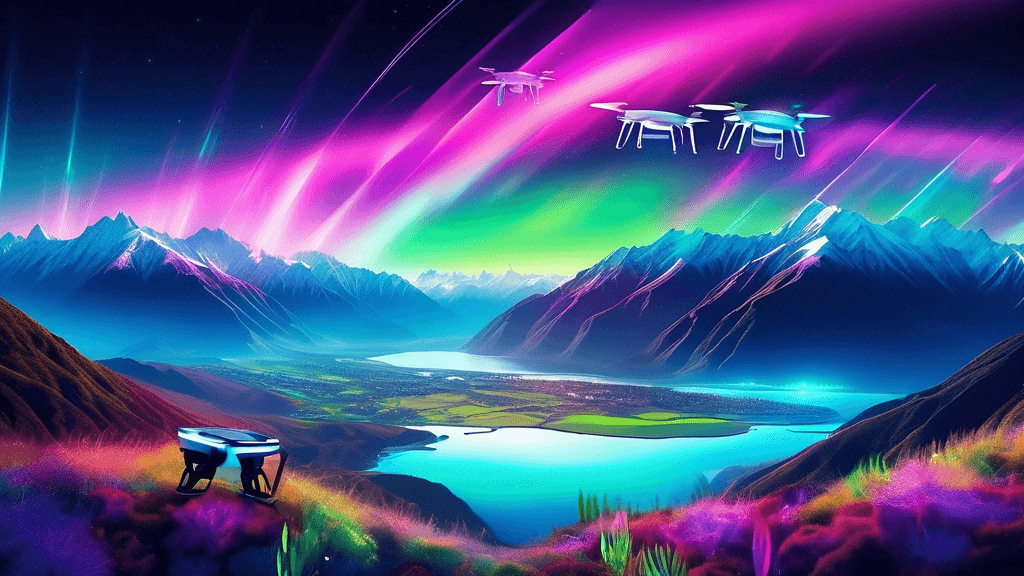
Exploring the Future of Landscape Photography in New Zealand
Share
The Evolving Realm of Landscape Photography in Newest Zealand
New Zealand, a picturesque archipelago with landscapes that could easily be mistaken for brushstrokes on an artist's canvas, has long been a haven for photographers. From the majestic peaks of the Southern Alps to the tranquil waters of Fiordland, the country offers a myriad of breathtaking scenes ripe for capturing through the lens. But as we delve deeper into the 21st century, what does the future hold for landscape photography in this beautiful country?
The Impact of Technological Advancements
Recent years have seen a surge in technological advancements that have reshaped the landscape photography scene. High-resolution cameras and sophisticated accessories, such as drones and gimbal stabilizers, are making it possible for photographers to capture images from new perspectives and with unprecedented detail. Consider the insights from John Tan, a renowned landscape photographer based in Auckland:
The game has definitely changed. With the advent of drone photography, we can now explore and capture landscapes from angles that were unimaginable before.
- Drone usage allows photographers to shoot vast expanses of scenery from above, providing a comprehensive view that highlights New Zealand's diverse topography.
- New camera sensors are enabling photographers to capture clearer images in low light conditions, opening up new possibilities for shooting during twilight hours.
The Role of Social Media
Another significant factor contributing to the transformation of landscape photography is the rise of social media. Platforms like Instagram, Facebook, and Pinterest offer photographers a global stage to showcase their work, reach a wider audience, and gain inspiration from peers around the world. This has fostered a vibrant community of photographers who share tips, tricks, and perspectives, thereby enriching the entire field.
Social media has been instrumental in democratizing photography. Today, anyone with a smartphone can share their vision with the world, which I think is truly empowering, says Emma Clarke, a landscape photographer from Christchurch.
Sustainability and Ethical Considerations
As the popularity of landscape photography grows, so does the foot traffic in many of New Zealand’s pristine locations. This influx poses risks to these delicate ecosystems, leading to an increased emphasis on sustainability within the photography community. Photographers are now more conscientious about adhering to paths, respecting wildlife, and leaving no trace.
Environmental impact aside, there's also a growing conversation around the cultural sensitivity of photographing certain landscapes, especially those which hold spiritual significance for the indigenous Maori communities. Ethical photography practices that respect local customs and heritage are becoming a pivotal part of the discourse:
We must remember that while our primary aim is to capture beauty, we should also protect and respect the land and its people, reflects Taylor Ren, a photographer specializing in cultural landscapes.
Future Trends and Predictions
Looking ahead, the future of landscape photography in New Zealand promises to integrate even more deeply with technological and ethical evolution. Here are a few trends that are likely to shape the landscape:
- Increased use of VR and AR: Virtual reality and augmented reality could allow people from around the world to experience New Zealand's landscapes from their homes, which might also help mitigate the environmental impact of tourism.
- Greater focus on remote and lesser-known locations: As popular spots become overcrowded, photographers might seek out more remote areas, thereby spreading the environmental footprint more evenly.
- Continued emphasis on conservation: Collaborations between photographers, conservationists, and local communities could lead to innovative projects aimed at preserving landscapes through art and awareness.
Conclusion
The landscape of landscape photography in New Zealand is ever-changing, driven by both innovations in technology and a growing awareness of environmental and cultural responsibilities. As we move forward, the synthesis of art and advocacy provides a promising path toward not just capturing the beauty of Newland’s landscapes, but also preserving it for generations to come. Whether you're a professional photographer, an enthusiast, or simply a lover of nature, the evolving field of landscape photography calls for participation, reflection, and action.>
Are you ready to be a part of this exciting journey?
Explore responsibly, capture ethically, and share conscientiously.





